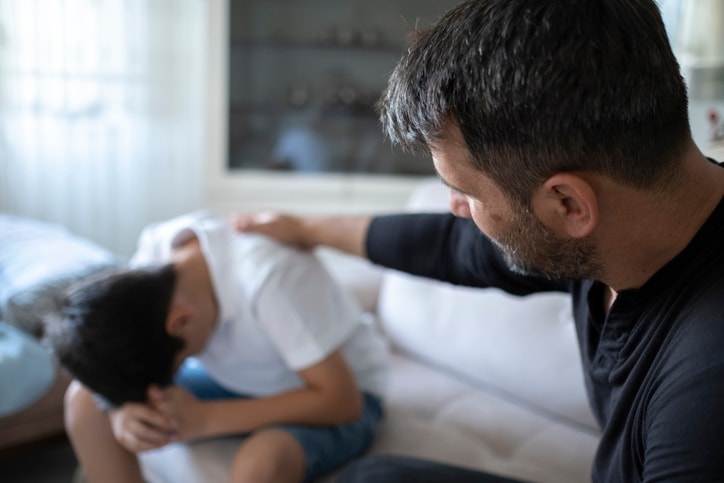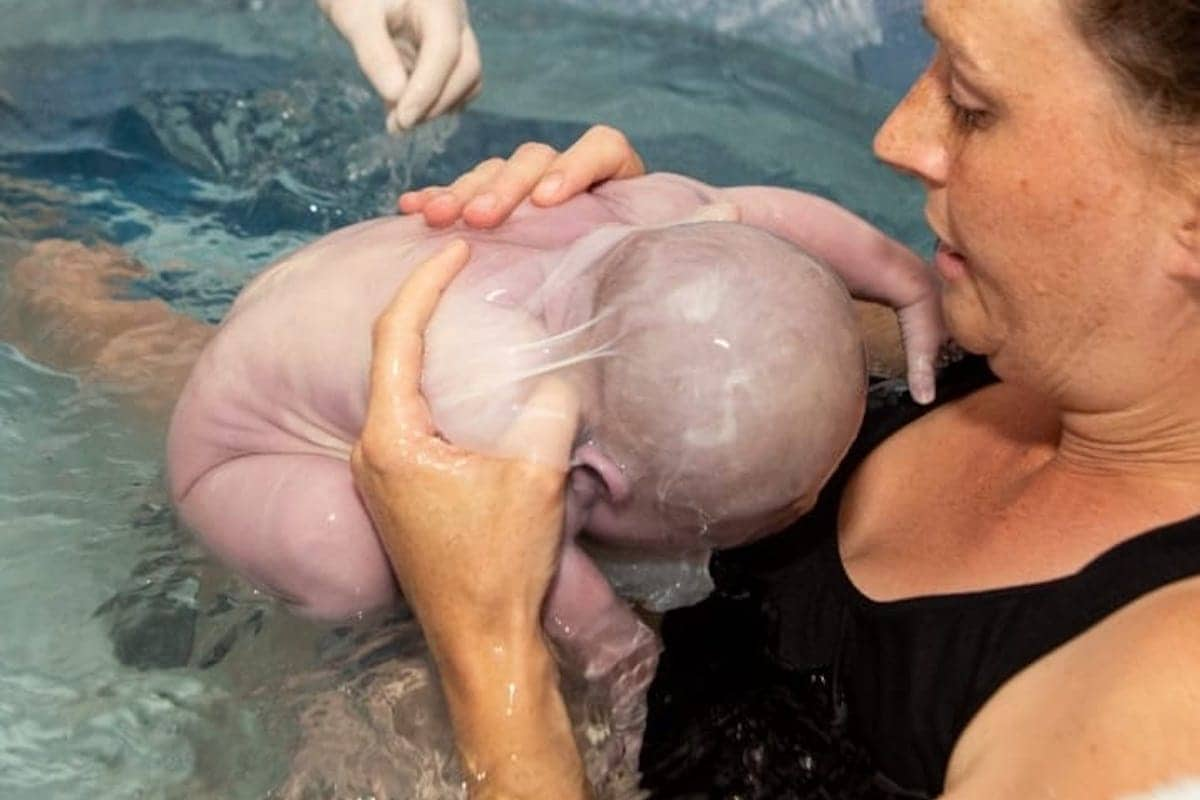An infant cries out to a parent to signal they need to be changed, fed or rocked to sleep. A toddler or younger child might tantrum or scream when they don’t get their way. But an unhappy teen or preteen may not know what they need, and instead of crying or screaming, they withdraw and silently fall into sadness. Unfortunately for some kids, prolonged sadness turns to hopelessness and thoughts that the world might be better off without them.
“It is so hard to fathom that a child would die by suicide, particularly young children,” says pediatrician Dr. Adrea Theodore from Burlington, North Carolina. “Parents should be aware, though, that while rates of suicide have generally increased over the last 20 years for every age category, the highest rate of increase has been among younger children.”
“Parents should be aware, though, that while rates of suicide have generally increased over the last 20 years for every age category, the highest rate of increase has been among younger children.”
— Dr. Adrea Theodore, pediatrician
In fact, according to the most recent report from the Centers for Disease Control and Prevention (CDC), suicide is the second leading cause of death for kids ages 10-14 and the third leading cause of death among those between the ages of 15-24.
Theodore works for CrossRoads Child Advocacy Center (CAC) where she says she has observed an increase of cases of kids expressing thoughts of hopelessness. “I deal with a lot of kids who are suicidal in my current practice at the CAC,” she says.
Although no parent wants to think about their child or teenager dying by suicide, experts want parents and caregivers to recognize the signs of mental health distress so they can step in with suicide prevention tools to help kids before it’s too late.
How to know if a kid is suicidal
“In general, parents know their kids better than anyone,” says Theodore. “They are often the first to notice if their child is acting differently or seems different.” She adds, “Be on the lookout for kids who suddenly show no interest in activities, or seem sad, depressed or withdrawn; kids who are suddenly moody or extremely agitated by little things.”
“Be on the lookout for kids who suddenly show no interest in activities, or seem sad, depressed or withdrawn; kids who are suddenly moody or extremely agitated by little things.”
— Dr. Adrea Theodore, pediatrician
Signs and symptoms of a suicidal teenager
So what are the warning signs of suicide? How do you know your teen is experiencing something beyond the throes of adolescence? Theodore says there are a multitude of factors, rather than one clear set of answers that will fit every situation. However, based on data collected by experts and many organizations working to turn the tide, there are some trends in behavior that may signal a child is at risk.
We asked licensed clinical psychologist Melissa Robinson-Brown, aka “Dr. Mel” from Montclair, New Jersey for a list of warning signs. Dr. Mel is owner and executive director at Renewed Focus Psychology Services and works with women and families in distress.
According to Dr. Mel, these are the warning signs to watch for:
3 possible signs of a suicidal teenager
- Behavioral cues: The first thing to notice is a change in your teen’s demeanor signaling that they may be experiencing a mental health concern. You want to keep your pulse on the situation from the early stages so you can notice further changes if they occur. You may notice increased withdrawal from friends (particularly important) and family (this is also part of adolescent behavior so keep it in mind, but it’s not the only sign). You can also look for teens doing things like giving away important possessions or writing goodbye letters to others.
- Mood cues: Suicidal warning signs in teens look similar to those in adults. However, depression may present differently in adolescents. We are more likely to see irritability in adolescents versus a sad or depressed mood. Again, it’s important to note when your teen’s mood or functioning changes. This goes for social media as well, where teens quite often go to express feelings about themselves and their state of being.
- Verbal cues: You may hear language like, “I just want to sleep for a long time” or “Maybe it would be easier for everyone if I just wasn’t here.” Also listen for statements like, “I just wish the pain would stop” or “I don’t want to be here anymore.” They may not use the words “I’m going to kill myself,” but it may be apparent in their language. Another clue? If you ask a teen directly if they want to hurt themselves and they cannot give you an affirmative “no,” then this is a sign that they’ve been thinking about it or are unsure if they can keep themselves safe.
Susan Myers of Homestead, Florida lost her adult daughter Lydia to suicide in 2016. She says she first noticed a change in her daughter in middle school. “There was a lack of interest in school even though she was in the gifted program. She isolated from our family meals and just became very quiet.”
Myers says her daughter’s behavior continued to worsen with drastic changes of her appearance and eventual self harm with cutting. Yet, Lydia seemed to “get better” as she grew into adulthood and was able to find a career she loved. Then she began to struggle with her mental health again and died by suicide at age 27.
Myer’s advice to parents who suspect their child may be at risk: “Trust your instincts.”
What risk factors to look for with teen suicide
Both Dr. Theodore and Dr. Mel agree that an underlying mental health condition puts kids at higher risk.
Other factors that increase the chance a teen may be at risk for suicide:
- Personal struggles with anxiety or emotional regulation or difficulty developing good coping skills.
- Experience with bullying on or offline or significant trauma.
- History of self-harm, not necessarily because they want to kill themselves, but rather, methods of self-harm such as cutting may result in a significant medical event even when that is not the intention.
- History of suicide in the family.
- Exposure to racism and discrimination, especially in our current climate.
- Connection to friends who have committed suicide.
How you can support your child
“Do not ignore your child’s mental health difficulties,” warns Dr. Mel. “If your child tries to tell you about the things going on in their life and are seeking support, do not minimize or dismiss their concerns regardless of how big or small you think the concern may be.”
“If your child tries to tell you about the things going on in their life and are seeking support, do not minimize or dismiss their concerns regardless of how big or small you think the concern may be.”
— Melissa Robinson-Brown, licensed clinical psychologist
She also strongly advises watching social media activity. “Pay attention to what they are viewing and how they are being treated. So much happens on social media both in terms of what your child is putting out there and what they are receiving.” Dr. Mel adds, “This could be one of the biggest and most transparent clues to your child’s emotional state and an indicator of triggers or events that may lead to depression, anxiety and potential suicidal behavior.”
When should parents seek professional help?
“If parents notice any warning signs,” Theodore says, “it’s a time to increase communication with their child. If they are unable to discern the cause, but the behaviors persist, then it’s time to seek professional help.”
She says, “A first step could be talking with the pediatrician or the child’s healthcare provider. In the case where a child expresses that they wish they were not alive or others would be better off if they were dead, parents should act urgently to get the child help because young children often act impulsively, especially when distressed.”
“In the case where a child expresses that they wish they were not alive or others would be better off if they were dead, parents should act urgently to get the child help because young children often act impulsively, especially when distressed.”
— Dr. Adrea Theodore, pediatrician
Find resources and support
For parents who think their child might be struggling or at risk for suicide, Dr. Mel says, “Don’t do this alone. It is a very difficult and hard road to navigate on your own. There are other parents out there dealing with the same struggles that you have experienced and having support can make a world of difference.”
Outside of reaching out to other parents and support groups, there are also several suicide prevention organizations working to support parents and caregivers with information and emergency resources.
Here’s a helpful list of suicide prevention resources:





